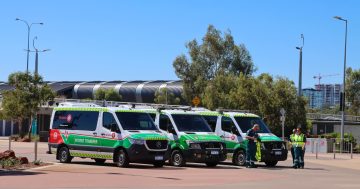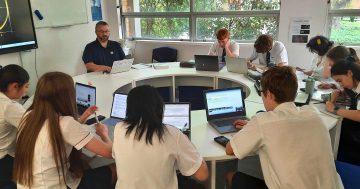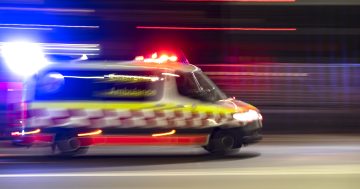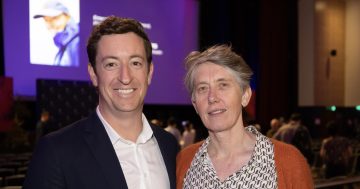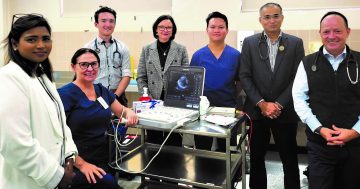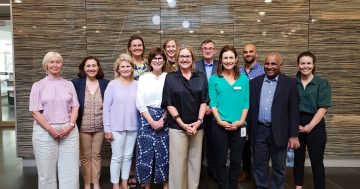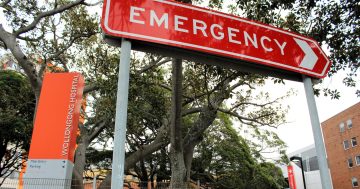Abby Dinham* says St John Ambulance has launched a groundbreaking new virtual reality course to teach people how to save a life.
 At a pop-up café at one of Melbourne’s busiest train stations, teacher Tim Smith is getting a lesson in saving lives.
At a pop-up café at one of Melbourne’s busiest train stations, teacher Tim Smith is getting a lesson in saving lives.
Sitting on a stool, wearing virtual reality (VR) goggles, he’s oblivious to the bustle of human traffic around him, as he’s immersed into a digitally contrived emergency.
“I thought it was really good, the technology was great,” Tim said.
“It genuinely makes you think about it, you feel like you’re actually there, it’s made me feel more confident in acting in an emergency.”
It’s an Australian first training course conducted through virtual reality.
The first-person digital experience was created to improve confidence to enable bystanders to act in emergency situations.
St John Ambulance team leader Katie Van Woerkom said it’s a whole new level in first aid training.
“People feel like they’ve dived into something and they’re immersed into a different world and they can actually feel what it would be like to have a real emergency in front of them, [how they] could they handle it and what should they do next,” she said.
Putting on the goggles, participants are presented with an emergency scenario, such as standing in line to pay at a pay station in a carpark when suddenly a man falls to the ground.
The user is asked to assist and then quizzed on the best way to respond.
St John Ambulance said the new style of learning cuts down the time commitment for a traditional cardiopulmonary resuscitation (CPR) module by one-third.
St John Ambulance CEO, Gordon Botwright said last year in Victoria alone, over 6,400 people suffered a cardiac arrest, but only 40 per cent received CPR from a bystander — a figure he’s hoping to improve.
“We set ourselves a goal over the next five years to have 90 per cent of sudden cardiac arrests out of hospital receive CPR and when the rate is only about 40 per cent there is a lot of work to do there,” he said.
Melbourne office worker Allan Veitch wants to be one of that 90 per cent.
Stopping in for a CPR refresher on his way to work, he said he’d like to be useful in an emergency.
“It’s important for everyday life whether you’re at home, community or work, you never know when someone may need some assistance,” Allan said.
Mr Botwright said it’s hoped the virtual reality experience will help improve not just reaction times, but also the numbers of people willing to give CPR a go in a real-life emergency.
“They are reticent to try it out, which is why the virtual reality experience makes them feel like they’ve done it before,” he said.
“When you’re in the community and someone falls down, you’ll know what to do because you’ve done it through the virtual reality training.”
Research shows VR students react 20 per cent faster than those schooled in the traditional method and achieve an information retention rate of 75 per cent compared with just 5 per cent from those receiving a lecture.
St John Ambulance plans to follow up the CPR module with virtual reality courses in treating snake bites, anaphylaxis and choking in coming months.
* Abby Dinham is a journalist for SBS in Melbourne. She tweets at @abbydinham.
This article first appeared at www.sbs.com.au.


